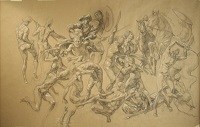
COMPOSITION
Thumbnail to a large version of the current state of completion:
I think of figure compositions like this one along the lines of classical music in their complexity. There are several levels going on at once, and sometimes a mark for something as small as a single figure can affect multiple compositional elements. This, at least, is what I am trying to do and the success or failure of it will be judged upon completion.
On the first level of the composition is the overall narrative and theme. This becomes, as one friend described it, humanity amid chaos. It is a battle where mercenaries fighting for Florence under Sir John Hawkwood are surprised by an attack launched while they were bathing. Horns are sounded and they rally and win the fight. The depiction though is neither realistic nor illustrative, but the moment of crisis is used to show the quality of humans such that they can become heroic in overcoming despair and terror.
One aspect of this structure that I am not entirely convinced by is that the attack of the Milanese comes in from the right of the picture and the narrative - the transformation of men from panicked to heroic moves through time from right to left. The right will have the enemy coming toward the viewer and the left will have Florentine mounted troops moving away from the viewer into battle. This will have the general movement pivoting on the center, but I'm not sure if it will work if the viewer naturally wants to read from left to right.
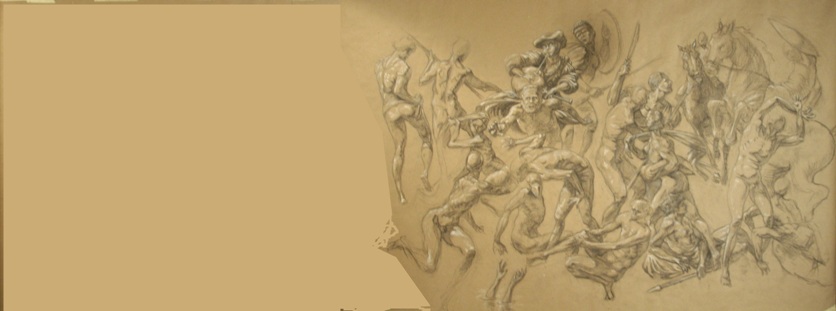
The central figure pivots to the right as he buckles his trousers, reinforcing what will be the general movement of right site approaching viewer and left side moving away.
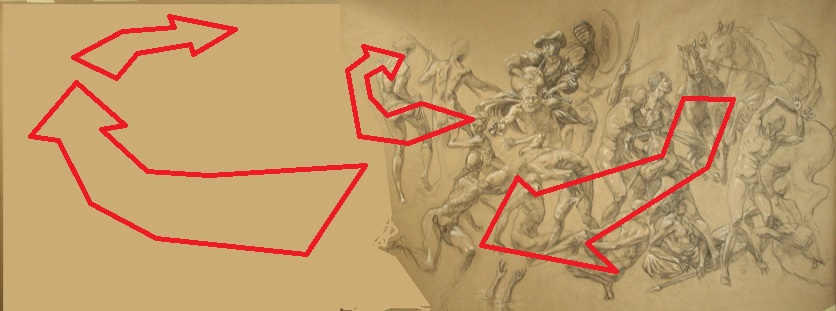
One device used to generate this movement are two figures who will be coming directly forward and looking at the viewer, even with one seeming to be trying to reach out of the picture. One pursues the other.
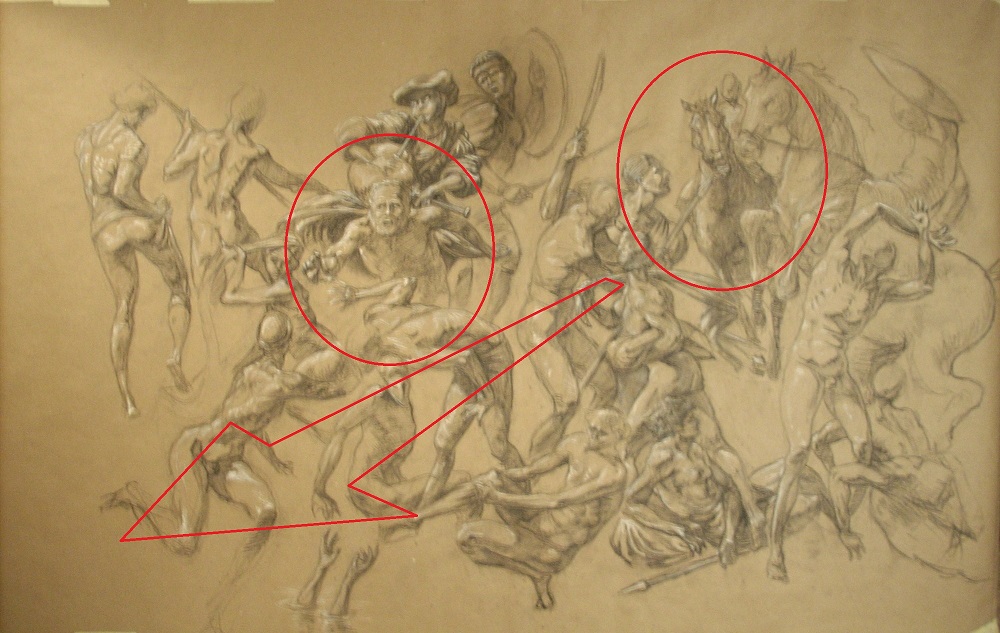
Another level of the composition is the attention of the figures, creating a dynamic as the characters interact with one another or just use their eye movement or gesture to create individual narratives that the viewer gets involved in. One concern is that these interactions, while developing the humanity theme (or inhumanity), they cannot be something that arrests the viewer. The viewer should be continually have his eye moved about the drawing.
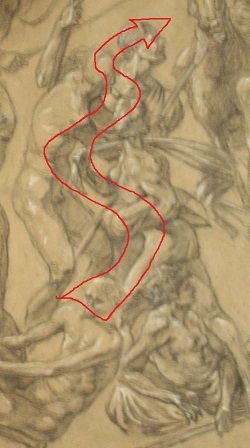
In this first example, we have the movement of figures and their eye movements leading from one figure to the next in time and space. Here I am using mass and gesture to create the visual movement. I am using characters in space to employ the viewers ability to read human activity as clues to where the eye should next move to. For this level of the composition, it does require human figures and could not be performed via abstractions.
In the second example, the two figures are linked by a narrative (and an ambiguity) where the viewer travels from drowning man to reacting man above (and back and forth maybe) as they reflect upon what narrative they might see there.
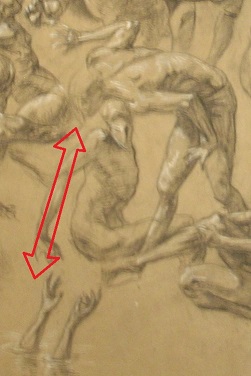
While the first two levels of the composition dealt with characters and mass and movement in a represented three-dimensional space, the next levels are simultaneously working on line
The dominant structural form is pyramids upon pyramids upon pyramids. They are created from groups and exist on the picture plane. The pyramids are not tight or always completed, but are general. With all the other mad movement, the pyramids give the piece structure and solidity. The eye does not follow the pyramids around, but instead the viewer senses them and gets a sense of order (and pattern) from their presence.
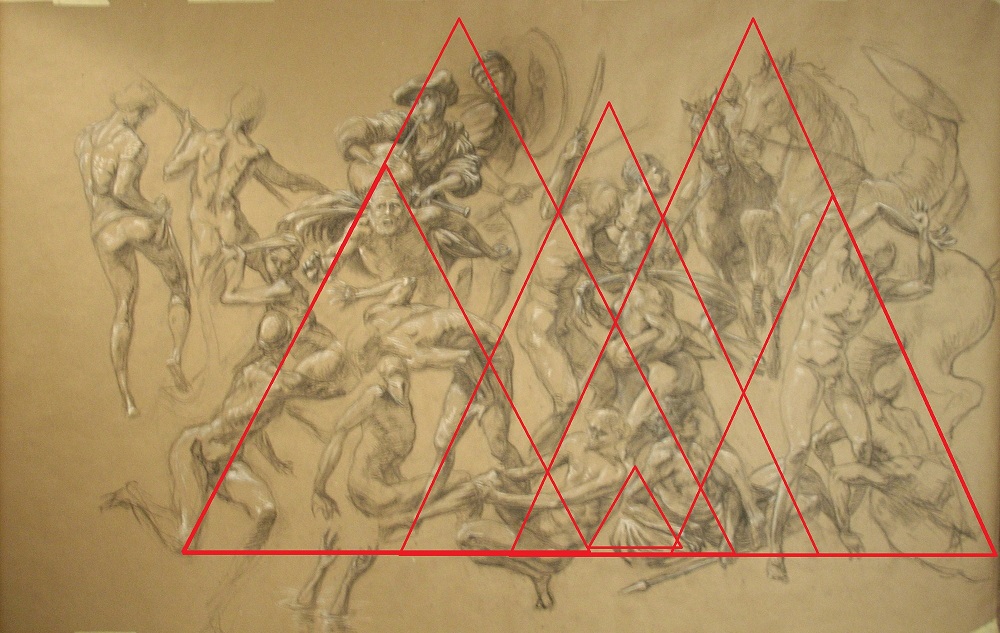
Overlaid over the static pyramids and dynamic strong chevron-like lines that do encourage a general sweep. These will encourage the eye when all else fails and keep it moving when it wants to stop on narrative bits. They also create tension points as lines converge
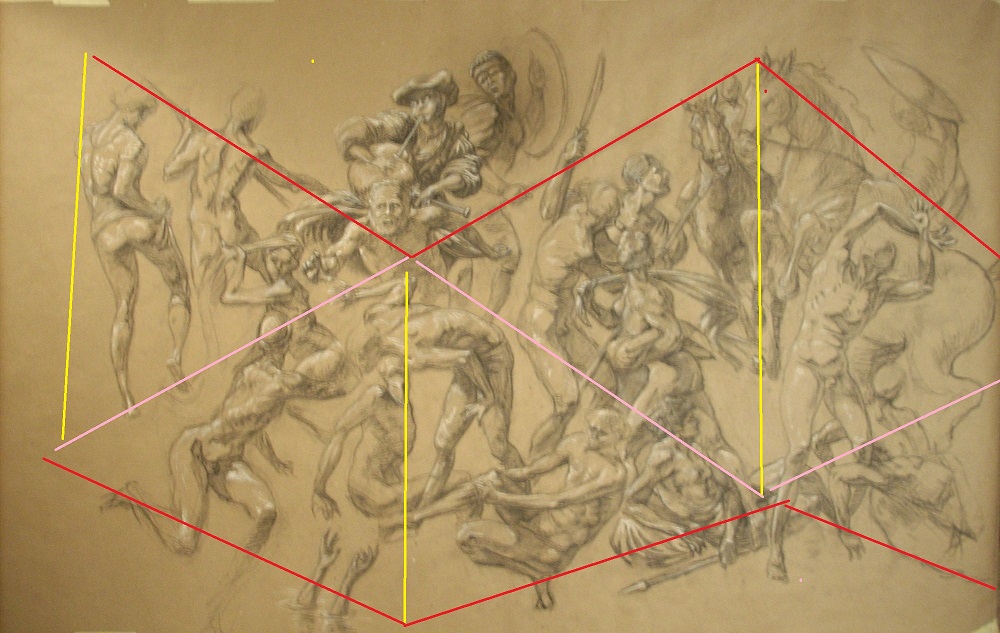
Gravity can kill a figure composition. Along the bottom of the canvas will be water and a jagged rough shoreline - a little foot high cliff. The little weave movement that the bottom semi-prone figures create is to keep the eye from falling off the page, instead delighting to flow along. I see it as a quick tempo little tune. A frieze.
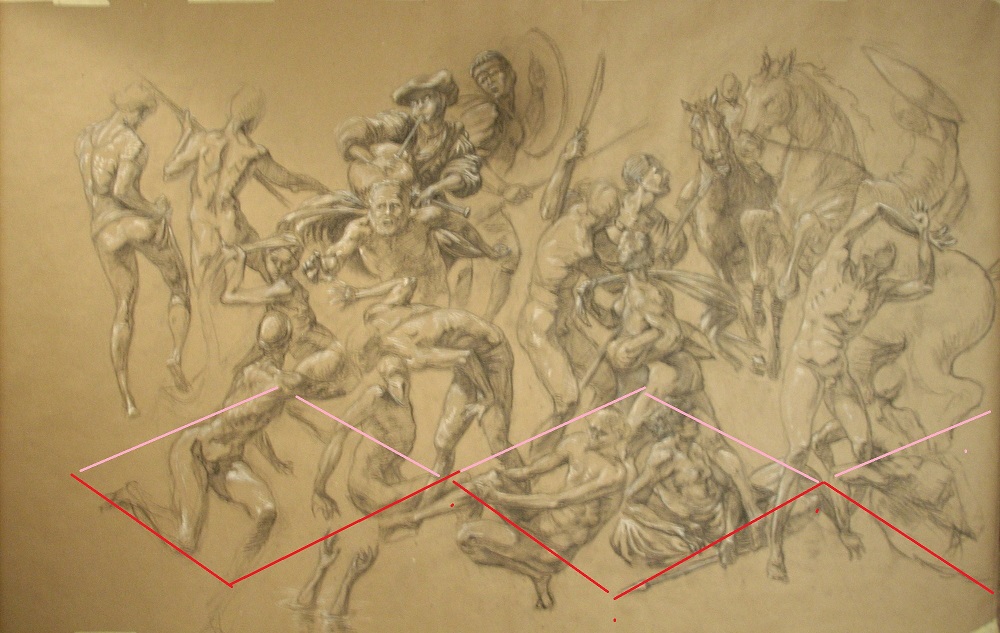
Another element, harkening back to the shapes as human figures, is a paralleling. There is a strong link between the central figure and the main figure on the right. Between them is a third which is vaguely an echo, but not as strongly. On the left, the echoes and parallels will continue. These five figures will ideally provide comfortable links.
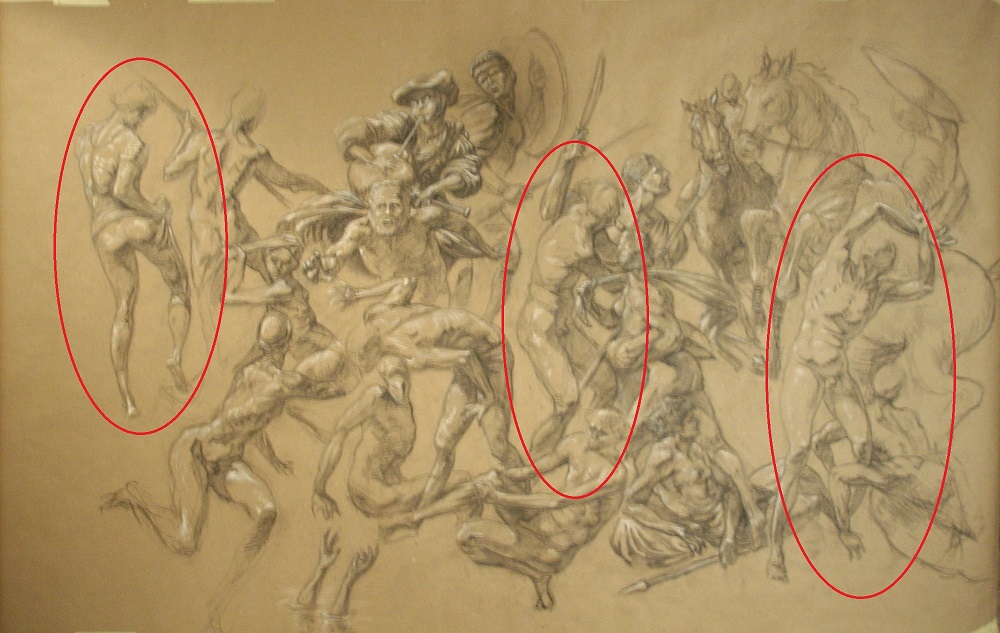
Finally there is a level of the composition that I find more difficult and one that is not yet working like it ought to. Consider this to be flourishes. I want there to be accents of fabric which take the eye on little whimsical s-curve journeys . The rump of the horse is not fabric (unless it is a pantomime horse) but I like the line and consider it to be playful like the fabric lines.
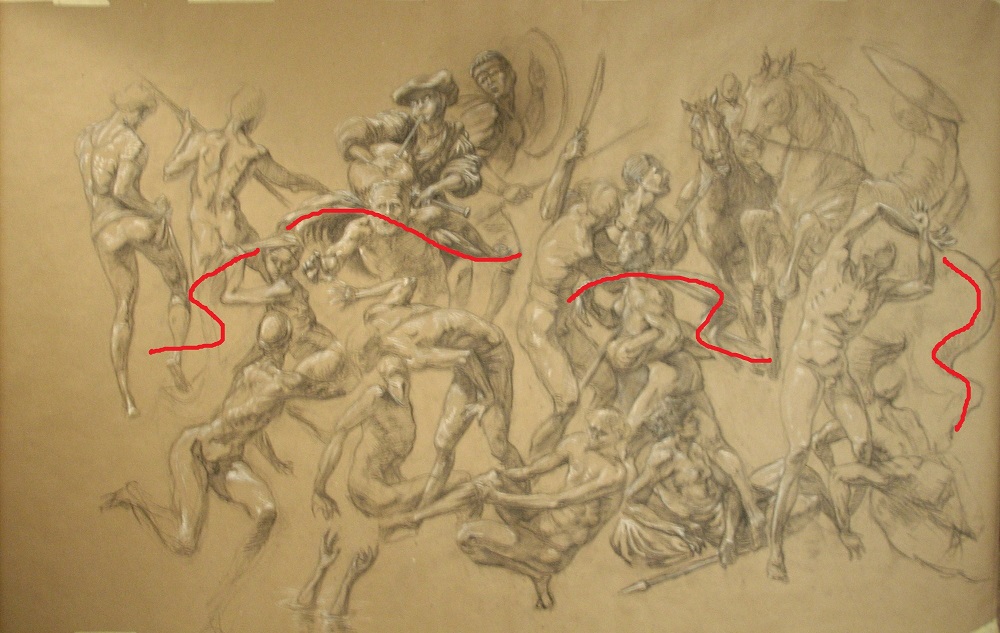
And as the left side begins to get mapped out, I plan the composition along the lines of this: